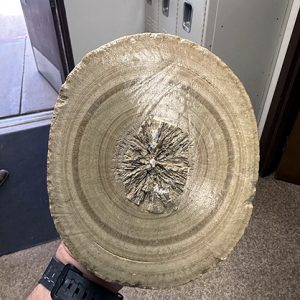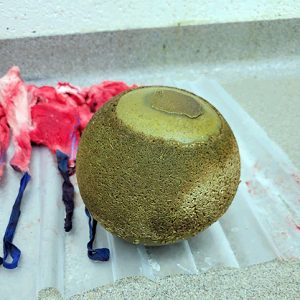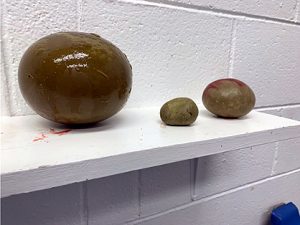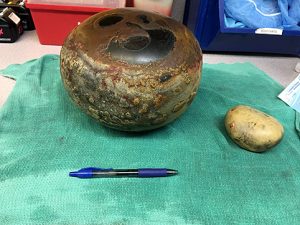Have You Ever Seen An Entrolith?
From Rood & Riddle Equine Hospital:
Have you ever seen an enterolith?
Sometimes called intestinal stones or calculi, these rock-like masses are formed inside the colon and, if they become large enough, cause obstructions, leading to colic episodes! In cases of enteroliths, you will see round-shaped masses, but they also form irregular lobe-type shapes and pyramidal and flat shapes. The amount also varies – it could be one very large mass or multiple small ones.
Studies have shown that the composition of enteroliths most often consists of magnesium or calcium and magnesium ammonium phosphate, also known as struvite. This is the same struvite that you would find in kidney stones. It forms around a nidus or a foreign body such as a stone, wire, or other material, and the body gradually forms layers around it.
Diet is a contributing factor to the formation of enteroliths. Horses fed a diet rich in alfalfa and bran have a high risk of forming stones.
These stones are most often found in the large and small colon and, if obstructed, can cause colic. If the appropriate equipment is available, some can be diagnosed through radiographic examination. Surgery is most often needed to remove the stones through an enterotomy.
Rood & Riddle Equine Hospital has a motto: Knowledge is Power. Community is Strength. Learn more about their services and philosophies:
Home – Rood & Riddle Equine Hospital (roodandriddle.com)















